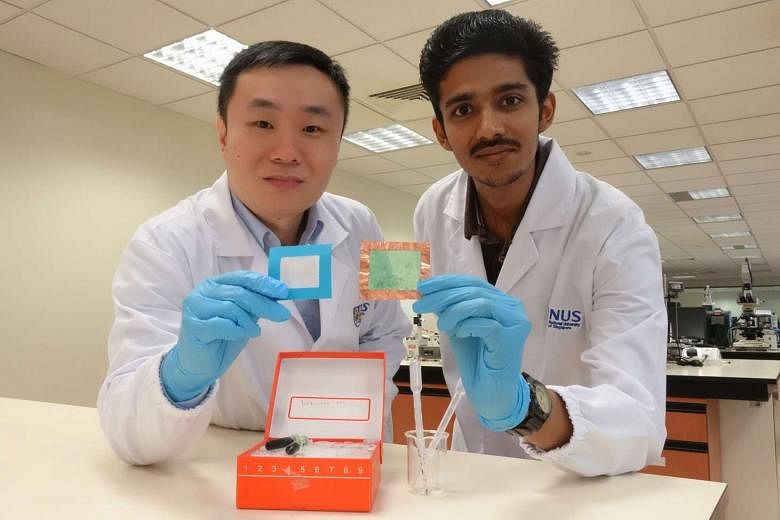SINGAPORE - Local scientists have developed a novel solution that can turn non-woven mesh into a filter that can block out harmful PM2.5 particles found in haze.
Using phthalocyanine, a chemical compound commonly used in dyeing, the National University of Singapore (NUS) team engineered organic molecules that can self-organise, in a way similar to the stacking of building blocks, to form nanoparticles and subsequently, nanofibres.
When applied onto non-woven mesh, these nanofibres - which exist in the form of an organic solution - will "cling" onto the material to create thin, see-through air filters that can remove up to 90 per cent of PM2.5 particles.
The technology was shown to reporters at a media briefing on Monday (March 20).
PM2.5 pollutants are smaller than 2.5 microns in diameter, or a 30th of the diameter of a strand of human hair. It is one of six pollutants, including carbon monoxide and sulphur dioxide, the Pollutant Standards Index (PSI) measures.
Long and regular exposure to PM2.5 is linked to higher risk of death from complications such as lung cancer or heart disease.
Lead researcher, Assistant Professor Tan Swee Ching from the department of materials science and engineering at NUS, said: "In the long run, it may even be possible for a DIY (do-it-yourself) kit to be made available commercially for consumers to make air filters at home."
He added the the air filters developed using the solution also allow better air flow - 2.5 times higher - than conventional air filters, and blocks off harmful ultraviolet (UV) rays as well.
Air-filters are generally gauged by a parameter called quality factor, which is dependent on two sub-factors - particle filtration efficiency and air permeability. Current commercial respirators have a high particle filtration efficiency, but air permeability is still considerably low, thus resulting in a low quality factor, said Prof Tan.
The NUS team's novel air filter achieves a quality factor of about two times higher than commercial respirators, he added.
A paper on the NUS team's research into the technology was recently published in the online version of peer-reviewed scientific journal, Small.
The NUS researchers have filed a patent for the invention and are looking to improve on its capabilities by, for instance, equipping it with antibacterial properties. They are also hoping to work with industry partners to commercialise the technology.

